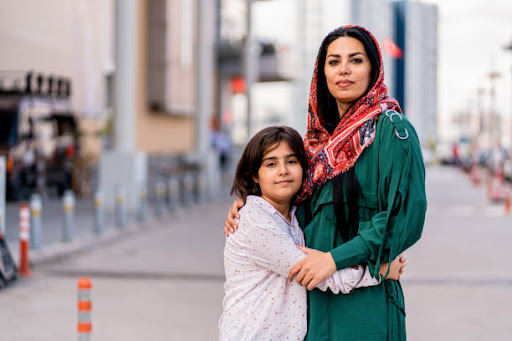Introduction: Reuniting Families through Australia’s Parent Visa Program
As families grow older, staying connected becomes increasingly important. For many individuals settled in Australia, the desire to have their aging parents live with them is a natural aspiration. Fortunately, Australia’s Parent Visa Program offers a pathway for parents to reunite with their children and enjoy the benefits of life in the Land Down Under. In this comprehensive guide, we will explore the various visa options available under the program, the eligibility criteria, and the application process, providing valuable insights for those seeking visa solutions for their aging parents.
The Australian Parent Visa Program: An Overview
Parent Visa Australia’s Program aims to reunite parents with their children who are already Australian citizens, permanent residents, or eligible New Zealand citizens. This program recognizes the importance of family bonds and facilitates the migration of parents to Australia to be with their loved ones.
Under this program, there are different visa subclasses designed to cater to the diverse needs of parents. Each subclass has specific requirements and conditions that applicants must meet.
Subclass 103: Parent Visa (Non-Contributory)
The Subclass 103 visa is a non-contributory parent visa, suitable for parents who are willing to experience a longer waiting period but do not wish to make a financial contribution to the costs of their migration. Key features of this visa include:
A significantly longer processing time compared to contributory parent visas.
Eligibility for government-funded healthcare through the Australian Medicare system.
Work and study rights in Australia. To learn more about student visas in Australia visit immigration consultant Melbourne.
Subclass 173: Contributory Parent (Temporary) Visa
The Subclass 173 visa is a temporary visa designed for parents who are willing to make a higher financial contribution to expedite the visa process. This visa allows parents to live in Australia for up to two years and serves as a pathway to the permanent Contributory Parent Visa. Key features of this visa include:
A shorter waiting period for permanent residency compared to the non-contributory parent visa.
Full work and study rights during the two-year validity period.
Subclass 143: Contributory Parent Visa (Permanent)
The Subclass 143 visa is the permanent counterpart of the Subclass 173 visa. It allows parents to remain in Australia indefinitely as permanent residents. Key features of this visa include:
Full access to government services and benefits available to Australian citizens.
The ability to sponsor other family members for permanent residency.
Subclass 804: Aged Parent Visa
The Subclass 804 visa is designed for parents who are already in Australia on a temporary visa, such as Subclass 173 and wish to transition to permanent residency. This visa is for aged parents, typically aged 65 years or older. Key features of this visa include:
Permanent residency in Australia.
Access to Medicare and social security benefits.
Eligibility Criteria for Parent Visas
To apply for any of the parent visas, certain eligibility criteria must be met. While the requirements vary depending on the visa subclass, some common criteria include:
Balance of Family Test: At least half of the applicant’s children must be living in Australia as Australian citizens, permanent residents, or eligible New Zealand citizens.
Age: There is no age limit to apply for most parent visas, but different age requirements may apply to certain subclasses.
Health and Character Requirements: All visa applicants must meet health and character criteria to be granted a visa.
Financial Capacity (For Contributory Visas): Applicants for contributory parent visas must demonstrate their ability to meet the higher financial obligations associated with these visas.
Assurance of Support: Some parent visa subclasses require an assurance of support from a sponsor in Australia, indicating that the sponsor will provide financial support to the visa applicant if necessary.
The Application Process
The parent visa application process can be complex and time-consuming.
Gather Required Documents: Collect all necessary documents to support the visa application, including identity documents, proof of relationship with the sponsoring child, health and character certificates, and evidence of financial capacity (for contributory visas).
Lodge the Application: Submit the visa application online through the Department of Home Affairs’ ImmiAccount platform or by post, depending on the visa subclass.
Pay the Visa Application Charge: The visa application charge must be paid at the time of application submission.
Biometrics and Medical Examination: Depending on the visa subclass, applicants may need to undergo a biometrics appointment and a medical examination.
Await a Decision: The processing time for parent visas can vary significantly. Tips for a Smooth Visa Application Process
Start Early: Begin the application process well in advance to ensure ample time for document gathering and preparation.
Seek Professional Advice: Consider seeking advice from a registered migration agent or immigration lawyer to navigate the complexities of the visa process.
Be Thorough: Pay close attention to the application requirements and provide all necessary documentation to avoid processing delays or refusals.
Conclusion
Australia’s Parent Visa Program presents a valuable opportunity for families to reunite and create cherished memories together. Whether opting for non-contributory or contributory parent visas, it’s crucial to meet the eligibility criteria and follow the application process diligently. By exploring the available visa options and seeking appropriate guidance, you can facilitate a smooth visa application process and welcome your aging parents to share the joys of life in Australia.

